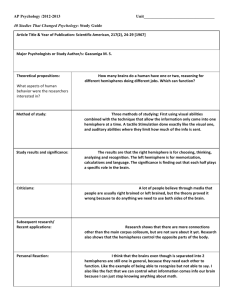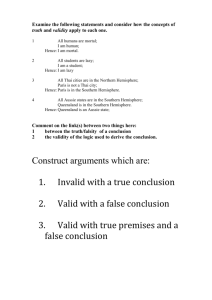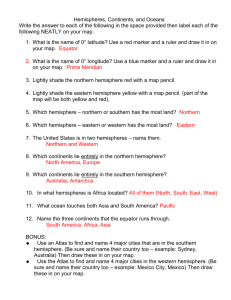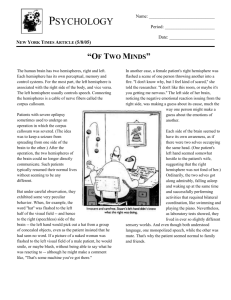File
advertisement
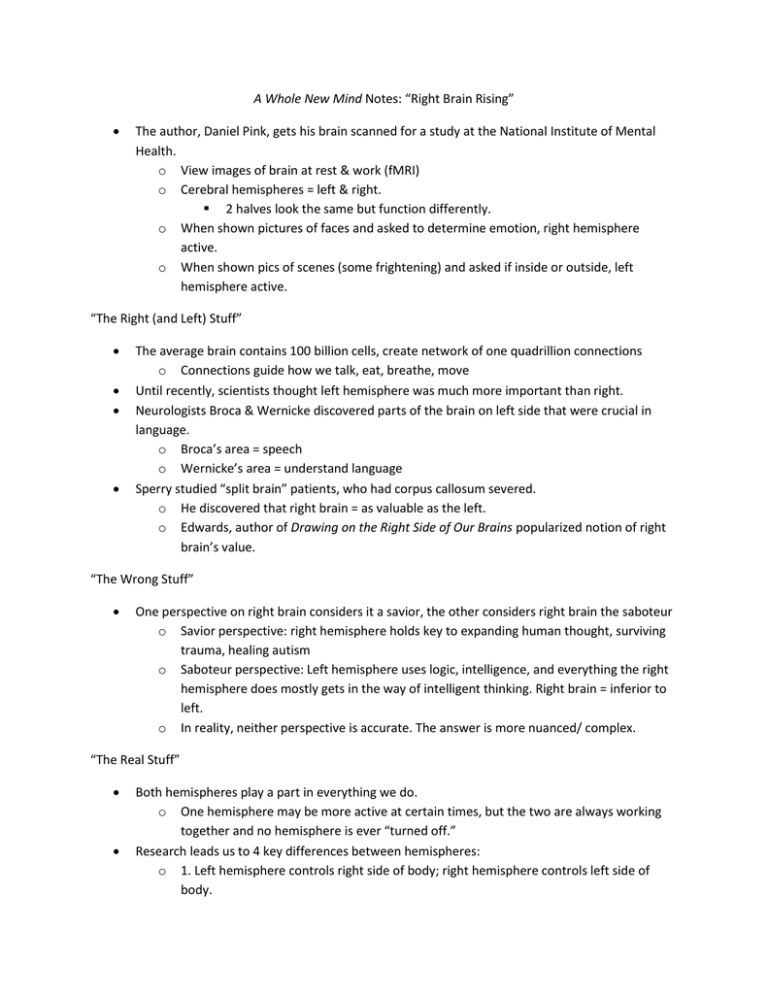
A Whole New Mind Notes: “Right Brain Rising” The author, Daniel Pink, gets his brain scanned for a study at the National Institute of Mental Health. o View images of brain at rest & work (fMRI) o Cerebral hemispheres = left & right. 2 halves look the same but function differently. o When shown pictures of faces and asked to determine emotion, right hemisphere active. o When shown pics of scenes (some frightening) and asked if inside or outside, left hemisphere active. “The Right (and Left) Stuff” The average brain contains 100 billion cells, create network of one quadrillion connections o Connections guide how we talk, eat, breathe, move Until recently, scientists thought left hemisphere was much more important than right. Neurologists Broca & Wernicke discovered parts of the brain on left side that were crucial in language. o Broca’s area = speech o Wernicke’s area = understand language Sperry studied “split brain” patients, who had corpus callosum severed. o He discovered that right brain = as valuable as the left. o Edwards, author of Drawing on the Right Side of Our Brains popularized notion of right brain’s value. “The Wrong Stuff” One perspective on right brain considers it a savior, the other considers right brain the saboteur o Savior perspective: right hemisphere holds key to expanding human thought, surviving trauma, healing autism o Saboteur perspective: Left hemisphere uses logic, intelligence, and everything the right hemisphere does mostly gets in the way of intelligent thinking. Right brain = inferior to left. o In reality, neither perspective is accurate. The answer is more nuanced/ complex. “The Real Stuff” Both hemispheres play a part in everything we do. o One hemisphere may be more active at certain times, but the two are always working together and no hemisphere is ever “turned off.” Research leads us to 4 key differences between hemispheres: o 1. Left hemisphere controls right side of body; right hemisphere controls left side of body. o o o 2. Left hemisphere is sequential (uses a linear series); the right hemisphere is simultaneous (computes/interprets all at once) 3. The left hemisphere specializes in text (e.g. denotation); the right hemisphere specializes in context (e.g. connotation) 4. The left hemisphere analyzes the details; the right hemisphere synthesizes the big picture. “Fear and Loathing in My Amygdalas” The human brain has two amygdalas (one in each hemisphere). o They control emotions, especially fear. o Which amygdalas is active depends on the task at hand. Left amygdala active when sequential reasoning needed (to assess danger of a situation, for example). Also has to do with learned reasoning Right amygdala active when simultaneous reasoning needed (to assess the emotion expressed in a face, for example). Also has to do with innate knowledge “A Whole New Mind” Humans seem naturally inclined to see the world in contrasting pairs. o Emotion & Logic Both needed to work together in a fully-functioning human brain How our hemispheres operate is a metaphor for how some people navigate their lives o Logical, sequential reasoning = “left-brained”; “L-Directed Thinking” o Holistic, intuitive, nonlinear reasoning = “right-brained”; “R-Directed Thinking” “R-Directed Thinking” is underemphasized in the Information Age. Everyone needs both approaches “R-Directed Thinking” and “L-Directed Thinking,” to live fulfilling, productive lives. o This is changing; “R-Directed Thinking” is gaining emphasis in this new age (Conceptual Age)


